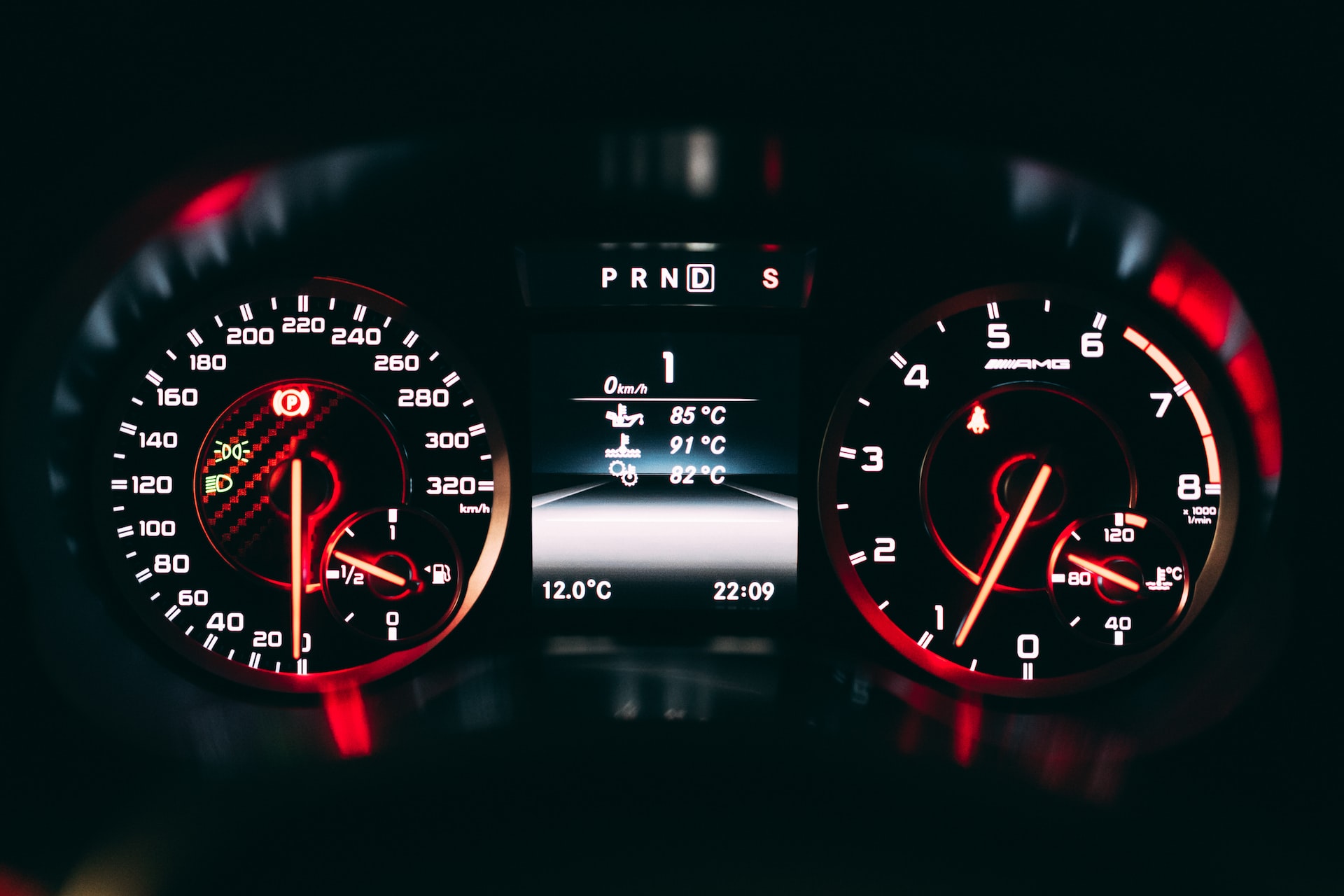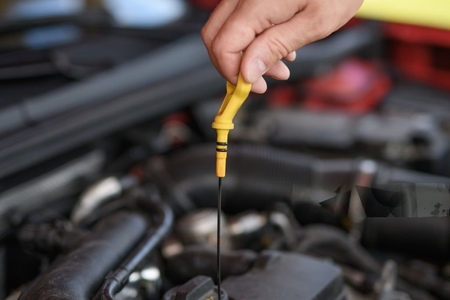Introduction
The check engine light is a warning indicator found in most modern vehicles that alert the driver of a potential issue with the engine or emission control system. The light will typically come on when a problem is detected and may either be a steady or check engine light flashing, with the latter indicating a more serious issue.
In this article, we will discuss the common causes of a flashing check engine light, how to diagnose the issue, and how to fix it.
Why Engine Light is Blinking:
Loose Fuel Cap
A loose fuel cap is one of the most common causes of a check engine light flashing. The fuel cap is designed to keep air out of the fuel system, which helps to prevent evaporative emissions. When the fuel cap is loose, it can cause air to enter the system, which can trigger the check engine light to flash.
To check if a loose fuel cap is a cause of the check engine light flashing, it is important to inspect the fuel cap and tighten it if necessary. If the light continues to flash after tightening the fuel cap, it may indicate a more serious issue and it is recommended to have the vehicle inspected by a professional.
Engine Misfire
Engine misfire is another common cause of a check engine light flashing. Misfiring occurs when one or more cylinders in the engine do not fire correctly, causing a loss of power and increased emissions. This can result in the check engine light flashing. There are several potential causes of engine misfires, including faulty spark plugs, ignition coils, or injectors, as well as problems with the fuel system or compression.
If the check engine light blinking due to an engine misfire, it is important to have the vehicle inspected by a professional to determine the cause of the misfire and have it repaired. Driving a vehicle with an engine misfire can cause further damage to the engine and increase emissions, which can be harmful to the environment.
Read Our blog on Maintenance Tips to Save You Money
Catalytic Converter Issues
The catalytic converter is an essential component of the vehicle’s exhaust system that helps to reduce harmful emissions. When the catalytic converter is not functioning properly, it can cause a flashing check engine light.
There are several issues that can affect the catalytic converter, including clogging, damage, or a failure in the oxygen sensor. Signs that the catalytic converter may be damaged or failing can include decreased engine performance, a loss of power, and an increase in fuel consumption.
If the check engine light blinks due to a problem with the catalytic converter, it is important to have the vehicle inspected by a professional. Driving a vehicle with a damaged or failing catalytic converter can be harmful. Can cause further damage to the engine and exhaust system.
Oxygen Sensor Problems
The oxygen sensor is an important component of the vehicle’s emission control system that measures the amount of oxygen in the exhaust. When the oxygen sensor is not functioning properly, it can cause a flashing check engine light.
There are several potential causes of oxygen sensor problems, including contamination, wear, or damage to the sensor. Symptoms of oxygen sensor problems can include decreased fuel efficiency, increased emissions, and decreased engine performance. Driving a vehicle with a faulty oxygen sensor can result in increased emissions and decreased fuel efficiency, which can be harmful to the environment and affect the performance of the engine.
Engine Coolant Temperature Issues
The engine coolant temperature sensor is responsible for measuring the temperature of the engine coolant. By transmitting this information to the vehicle’s engine control module.
If the check engine light blinks due to a problem with the engine coolant temperature sensor. It is important to have the vehicle inspected by a professional. Driving a vehicle with an overheating engine can cause serious damage to the engine and other components. Which can also be dangerous if the engine becomes too hot.
Ignition Coil Problems
The ignition coil is a critical component of the ignition system that converts the low voltage from the battery into the high voltage needed to ignite the fuel and air mixture in the engine. When the ignition coil is not functioning properly, it can cause a flashing check engine light.
There are several potential causes of ignition coil problems, including worn or damaged spark plug wires, a faulty spark plug, or a failing ignition control module. Symptoms of ignition coil problems can include engine misfires. Also decreased engine performance, and a decrease in fuel efficiency.
Mass Air Flow Sensor Issues
The mass airflow (MAF) sensor is an important component of the engine’s fuel and air intake system that measures the amount of air entering the engine. When the MAF sensor is not functioning properly, it can cause a flashing check engine light.
If the check engine light is flashing due to a problem with the MAF sensor, it is important to have the vehicle inspected by a professional. Driving a vehicle with a faulty MAF sensor can result in increased emissions and decreased fuel efficiency. Which can be harmful to the environment and affect the performance of the engine.
How to Fix the Issue
The steps for fixing a check engine light blinking will vary depending on the underlying cause of the problem. However, some general steps to consider include:
Consult a professional mechanic:
If the trouble code indicates a specific issue, it is recommended to consult a professional mechanic to properly diagnose and repair the problem. A professional mechanic will have the experience, tools, and knowledge to diagnose the issue and determine the best course of action to repair it.
Repair the issue:
Depending on the underlying cause of the flashing check engine light, the repair process can range from simple. Loose fuel cap, to more complex, such as replacing a faulty catalytic converter or oxygen sensor. It is important to properly diagnose and repair the issue. To ensure that the vehicle is operating correctly and efficiently.
Reset the check engine light:
Once the issue has been repaired, it is necessary to reset the check engine light. This can be done using an OBD-II scanner or by disconnecting the battery for a few minutes and reconnecting it.
Read Our Blog on Tips to Check Health Of Your Car Battery
Final Takeaway
To fix the issue, it is important to retrieve the trouble code stored in the engine control module. Consult a professional mechanic to properly diagnose and repair the problem. The steps for fixing the issue will vary depending on the underlying. But may include repairing the issue, and resetting the check engine light. Also, ensure ensuring that the vehicle is operating correctly and efficiently.
What does a blinking engine light mean?
A blinking engine light usually indicates a serious issue with your vehicle, such as a misfire or a problem with the emissions control system. It is important to address the issue promptly to prevent further damage to the engine. Which leads to potential harm to the environment. It is best to have your vehicle inspected by a professional.
Can I drive my car with the check engine light blinking?
Driving with a flashing check engine light is not recommended as it can indicate a serious issue with your vehicle. Continuing to drive with a flashing check engine light can cause further damage to the engine. Potentially harmful to the environment. It is best to have your vehicle inspected by a professional as soon as possible.
Why is my check engine light flashing but it stopped?
If your check engine light was flashing but then stopped, it could mean that the issue was temporary or intermittent. However, it is still recommended to have your vehicle inspected by a professional to ensure that the problem has been resolved and to prevent further damage. A flashing check engine light can indicate a serious issue, and it’s better to be safe than sorry.
How far can you drive with a blinking engine light?
Driving with a flashing check engine light should be avoided as much as possible. Continuing to drive with a flashing check engine light can cause further damage to the engine and potentially be harmful to the environment. It is best to have your vehicle inspected by a professional as soon as possible. Even if you have only driven a short distance with the check engine light flashing. The sooner the issue is addressed, the less damage it can cause to your vehicle.




